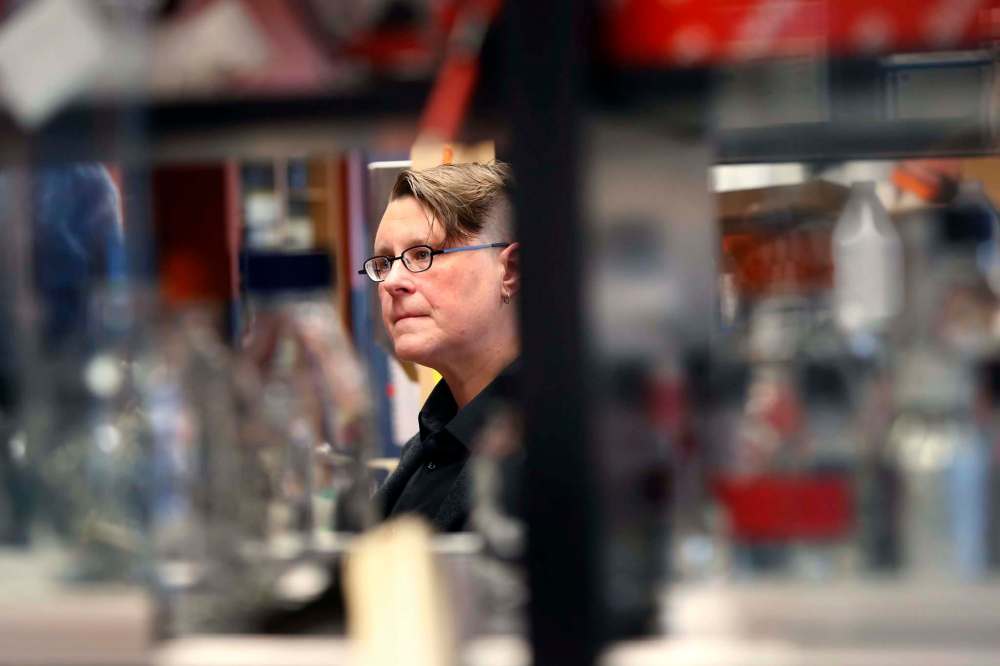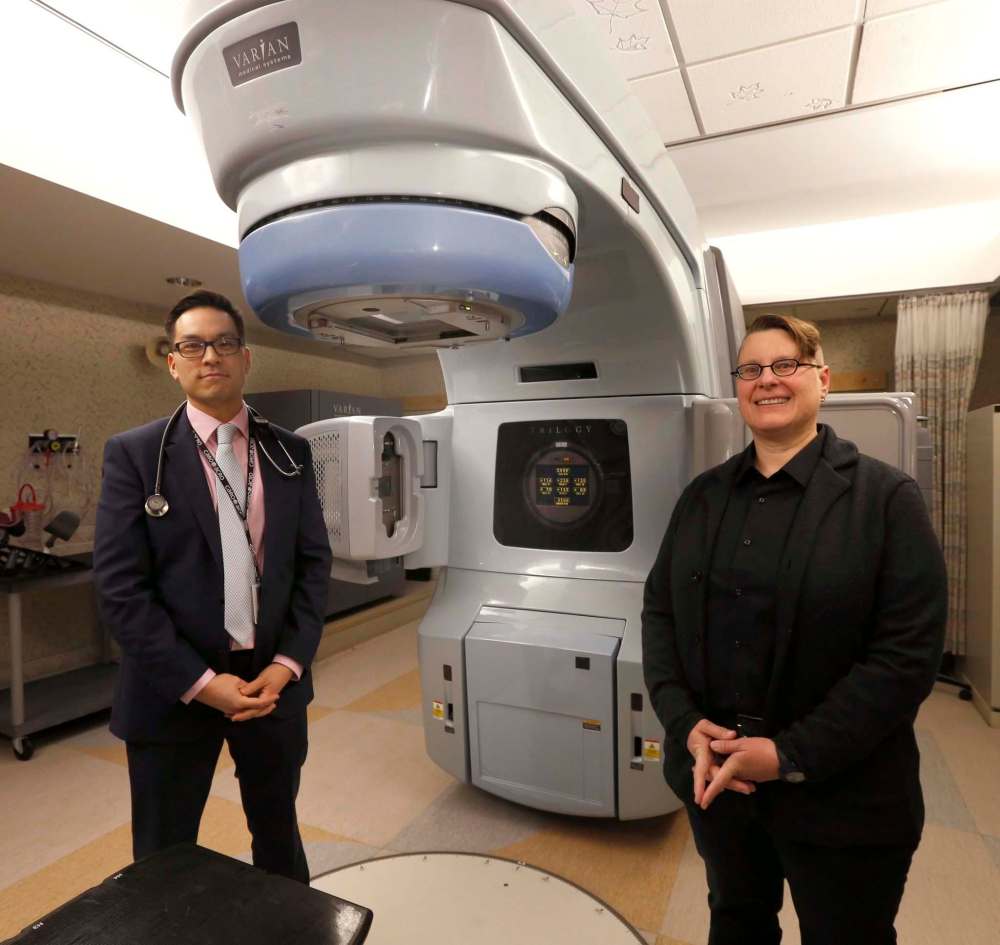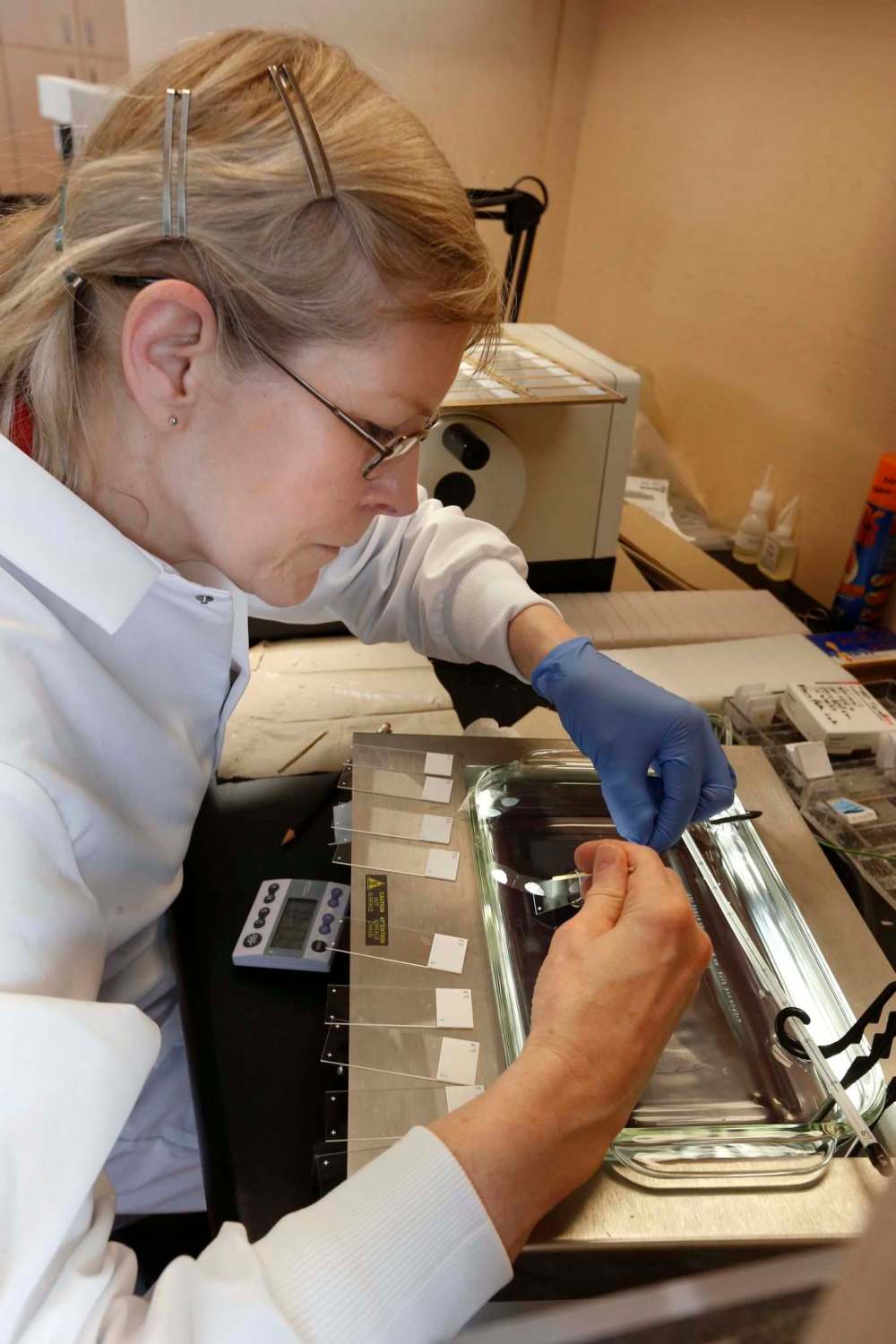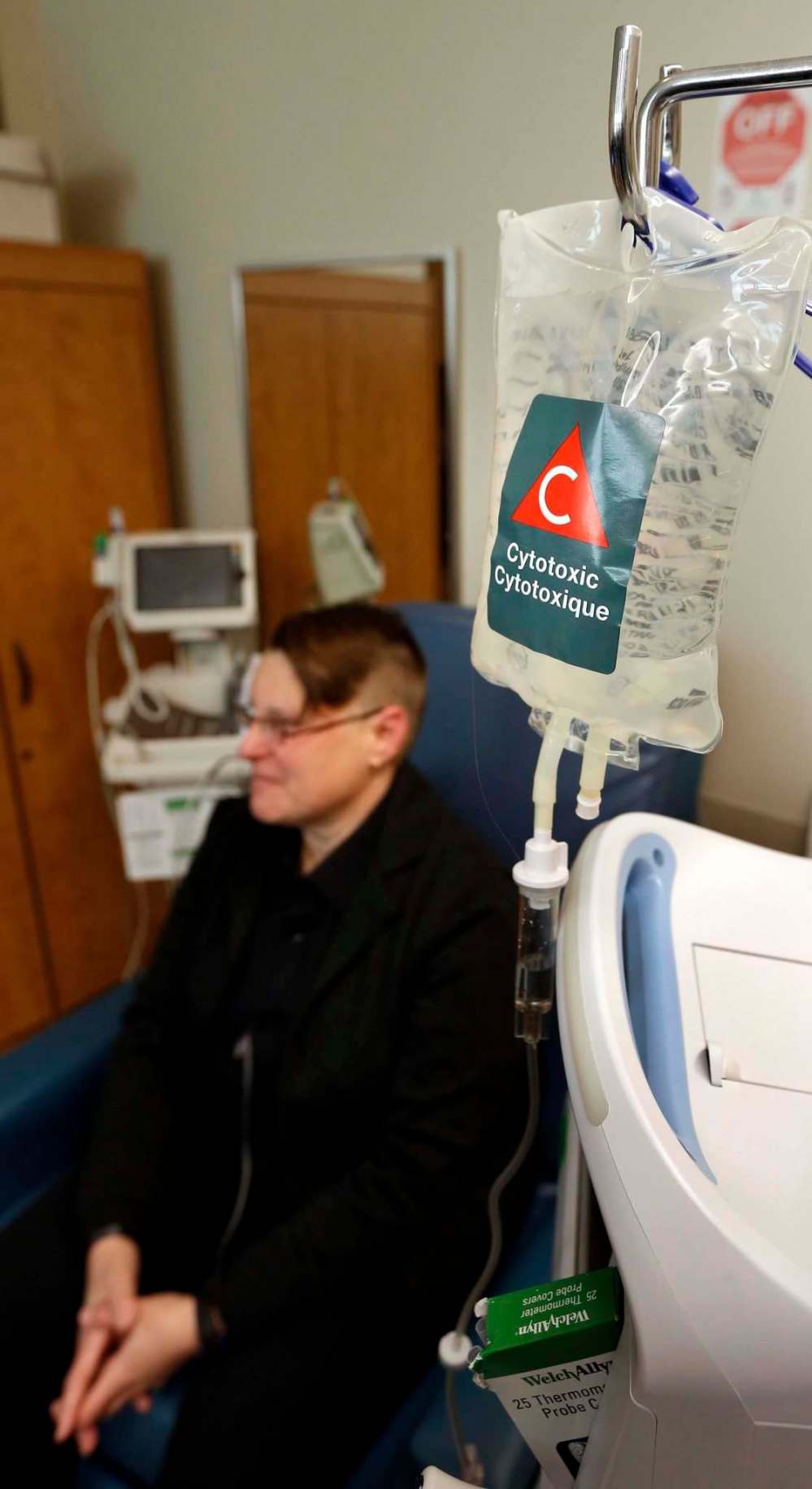Heroes deliver hope to battle horror
CancerCare Manitoba's brains, hearts and technology have been partners in Lisa Babey's life during the 10 years the relentless disease has worked to end it
Advertisement
Read this article for free:
or
Already have an account? Log in here »
To continue reading, please subscribe:
Monthly Digital Subscription
$0 for the first 4 weeks*
- Enjoy unlimited reading on winnipegfreepress.com
- Read the E-Edition, our digital replica newspaper
- Access News Break, our award-winning app
- Play interactive puzzles
*No charge for 4 weeks then price increases to the regular rate of $19.00 plus GST every four weeks. Offer available to new and qualified returning subscribers only. Cancel any time.
Monthly Digital Subscription
$4.75/week*
- Enjoy unlimited reading on winnipegfreepress.com
- Read the E-Edition, our digital replica newspaper
- Access News Break, our award-winning app
- Play interactive puzzles
*Billed as $19 plus GST every four weeks. Cancel any time.
To continue reading, please subscribe:
Add Free Press access to your Brandon Sun subscription for only an additional
$1 for the first 4 weeks*
*Your next subscription payment will increase by $1.00 and you will be charged $16.99 plus GST for four weeks. After four weeks, your payment will increase to $23.99 plus GST every four weeks.
Read unlimited articles for free today:
or
Already have an account? Log in here »
Hey there, time traveller!
This article was published 04/02/2017 (3192 days ago), so information in it may no longer be current.
It all started on Aug. 29, 2007.
“That’s when I first heard the words, ‘You have breast cancer,’” Lisa Babey said Friday.
Babey’s first thoughts, other than shock and initial fear, were of her maternal grandmother, Tekla, who died of heart disease exactly 25 years earlier on Aug. 29, 1982. The bizarre coincidence had an unexpected effect on her.
“The kismet or randomness… somehow gave me comfort,” said Babey, who was 38 years old when she was diagnosed. “That (Tekla) throughout this journey would somehow be taking care of me in some way, shape or form.”
That was nearly a decade ago. Since then Babey has had a recurrence of cancer in her breastbone in 2011, and in a lung in 2014. Recently, a jelly bean-size tumour was detected in her brain.

In fact, earlier this week Babey, an entomology researcher at the University of Manitoba, underwent gamma knife surgery to address the brain tumour. The only evidence of the operation is a small red dot on her forehead left by a frame to guide the laser to its target. But to paraphrase Babey, you should see the other guy.
“We found that thing and sent it back to hell,” she said.
On Friday, Babey was the focus of A Day in the Life of a Cancer Patient, as a gaggle of media followed her through CancerCare Manitoba’s treatment facilities. Today is World Cancer Day.

It was a behind-the-scenes glimpse of CancerCare’s radiation, chemotherapy and research stations housed in the McDermot Avenue building where most of the 6,800 Manitobans expected to be diagnosed with some form of cancer this year will undergo treatment.
First was the linear accelerator, the high-tech $4.3 million machine that delivers radiation. There are six in the building, which handle about 250 patients a day.
Babey has undergone 25 “radiation events” in total. Another four treatments were “boosters” to target scars around her tumours.
“It produces therapeutic X-rays in a very precise manner in order to target the tumour and avoid the normal tissues around it,” radiation oncologist Julian Kim explained. “For example, if you’re treating a tumour in the lung, you want to avoid the heart. This can do that with ease.
“Fifteen years ago we were not using anything nearly as complex as this. Almost real-time dose imagery.”
It’s estimated that one-in-three Canadians will need radiation therapy in their lifetime. One in eight women will be diagnosed with breast cancer.
Next was what Babey called “the big, blue chair” — the seat where she receives chemotherapy every three weeks. Each session lasts about 90 minutes.
Babey can only ballpark the number of chemo treatments she’s had since her initial diagnosis.
“Hundreds,” she said.
Yet when asked what advice she might offer to the people who will sit in that big, blue chair in the future, Babey was hopeful.

“It’s very scary,” she said. “There are fears of treatment effects. And I’d like people to be reassured that they will be taken care of in a manner that is top-notch. They don’t have to be afraid of treatment.”
Babey said CancerCare’s nurses are vital in helping patients cope with often-overwhelming anxiety and depression.
“All of the staff here have become like my family,” she said. “They have to keep their distance in order to do their jobs. So they take care of me with their hands and they hug me with their eyes.
“There’s absolutely no way I could have gone through this journey of chemotherapy without this great, cohesive and loving… team. They are undying in their dedication to their patients. I get pretty choked up about them.
“I’m not just seen as a tumour. I’m not just seen as a cancer. I’m seen as a person. I’m treated as a person who is living with cancer, not dying from cancer.”
The hands-on, human interaction can be a constant. But the science never stops evolving. For example, the chemo drugs Babey now receives were approved only a few years ago. And they’re also designed to attack her specific cancer.
“We’ve had targeted treatments for a long time,” offered medical oncologist Vallerie Gordon. “(But) we’re getting more finesse, we’re learning more about cancers. And breast cancer is probably one of the better-known cancers that can be broken down into different types to direct our therapy to those weaknesses.”
Custom treatment is now a buzzword in cancer treatment. There is a reason: Up on the sixth floor is the Tumour Bank, where more than 2,000 cancer case samples are kept in wax cubes or -80 C freezers. Blood samples are stored in liquid nitrogen tanks.
“Part of my breast is in here somewhere,” Babey cracked.
She’s probably right, according to Dr. Spencer Gibson, head of the cell biology section of the centre’s Research Institute.
“You’re surrounded by the bank,” Gibson said, adding that the CancerCare samples are linked with similar tumour banks across the country. The goal is to collect as many strains of cancer — lung, breast, prostate, leukemia — and study them. Then connect individual treatments to the research.
“It used to be all about the cancer,” he said. “Today, it’s all about the patient. It’s how can we treat ‘your’ breast cancer, instead of treating breast cancer (the same) as everybody.”
Babey said she has either experienced or benefitted from every step along Friday’s tour. Just 10 years ago, she was a seemingly healthy, fit, young woman with no history of breast cancer in her family. “I thought it happened to other people,” she said.

She found out differently, and now wants to share a story, and journey, that has not been all sunshine and lollipops. There was shock. There was fear of death. Depression.
And now, hope.
“Things shifted,” she said. “I went through feeling I could beat it, and then when the recurrence happened I was extremely disappointed. But through all this time I was given the confidence from my doctors that no matter what happened we had many, many different tools that we could use to treat my cancer as a chronic disease rather than a terminal illness.
“It’s not a death sentence. It’s a matter of using the most cutting-edge technologies that can to give me a good quality of life.”
Living with cancer has changed Babey. She has been in Stage 4 — the final one — since 2011. She’s been told it’s incurable, but so far manageable. The future, to her, is as much about discoveries in treatment as her own life plans.
“Time is on my side,” she said. “There are advances made every day. I live in the moment… and not to think about the future because the future is fiction. No one knows what’s going to happen. We don’t know what kind of cure or treatment or prevention tool is going to come our way, that might be right around the corner.
“I have gratitude for every moment and try to notice the little things. So I have hope. I don’t have dread for the future.”
randy.turner@freepress.mb.ca
Twitter: @randyturner15




Randy Turner
Reporter
Randy Turner spent much of his journalistic career on the road. A lot of roads. Dirt roads, snow-packed roads, U.S. interstates and foreign highways. In other words, he got a lot of kilometres on the odometer, if you know what we mean.
Our newsroom depends on a growing audience of readers to power our journalism. If you are not a paid reader, please consider becoming a subscriber.
Our newsroom depends on its audience of readers to power our journalism. Thank you for your support.


